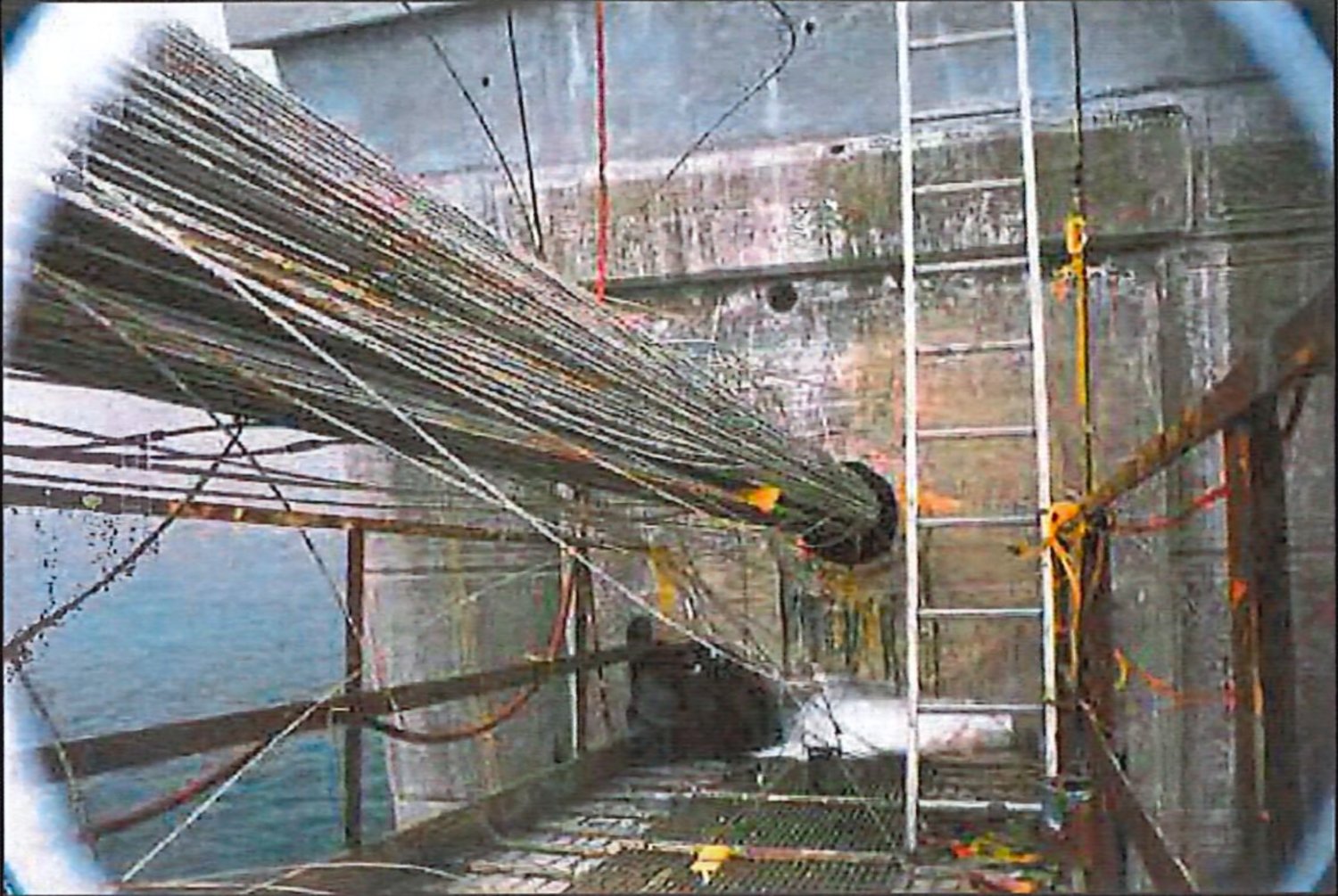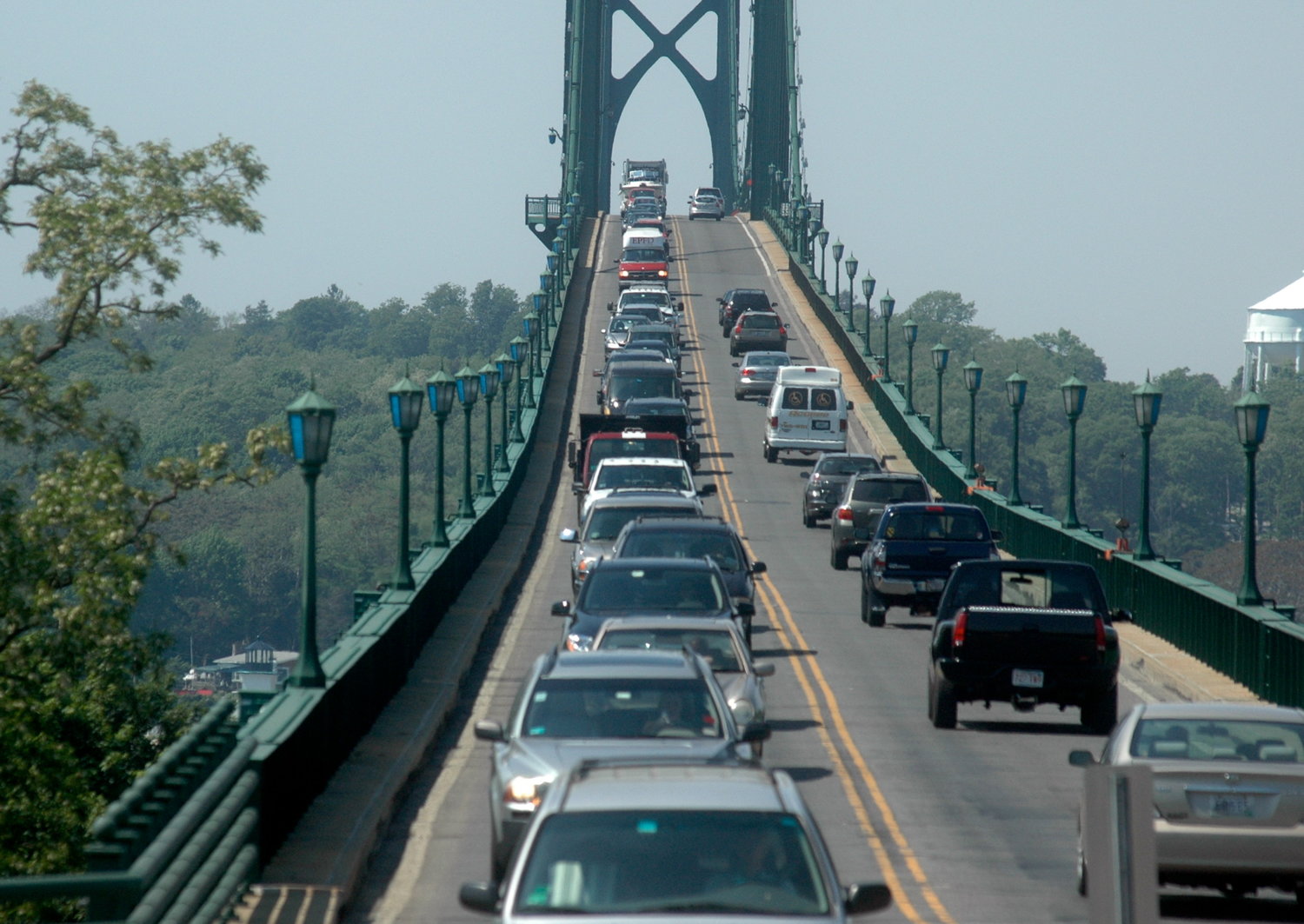- FRIDAY, JULY 26, 2024
RITBA outlines project to strengthen Mt. Hope Bridge
Dehumidification of cables would cost an estimated $35M
PORTSMOUTH/BRISTOL — “Don’t let the pictures scare you; the bridge is safe,” Eric Seabury, director of engineering for the R.I. Turnpike and Bridge Authority (RITBA) …
This item is available in full to subscribers.
Please log in to continue |
Register to post eventsIf you'd like to post an event to our calendar, you can create a free account by clicking here. Note that free accounts do not have access to our subscriber-only content. |
Day pass subscribers
Are you a day pass subscriber who needs to log in? Click here to continue.
RITBA outlines project to strengthen Mt. Hope Bridge
Dehumidification of cables would cost an estimated $35M
PORTSMOUTH/BRISTOL — “Don’t let the pictures scare you; the bridge is safe,” Eric Seabury, director of engineering for the R.I. Turnpike and Bridge Authority (RITBA) assured the Town Council.
Seabury made his comment Monday night while projecting a photo that showed numerous wire breaks inside a main cable on the Mt. Hope Bridge, a 1.2-mile lifeline off Aquidneck Island and into Bristol.
Still, RITBA representatives made their case plain: “We’re here because the Mt. Hope Bridge needs some work,” said Lori Silveira, RITBA’s executive director.
Since the bridge first opened in 1929, its cables have been maintained using traditional methods such as painting, oiling and caulking.
But at the same time, decades of water ingress have caused corrosion and abrasion on the wires that make up both cables, Silveira said. (Each main cable on the bridge contains 2,450 individual steel wires bundled in seven strands of 350 parallel wires.) That’s led to wire breakage and repair, which has caused the cables to gradually lose their initial strength, she said, adding that climate change has accelerated the damage.
According to backup material provided by RITBA, wire breaks and cracked wires have been found in several inspections of the bridge since 1960. More than 100 broken wires were reported in both cables in 1960, and 303 breaks were found in the southeast backstay alone in 1996. (They were rehabilitated using traditional methods.)
However, a relatively new and innovative process called dehumidification would not only stop further abrasion and corrosion, but reduce future maintenance costs, according to Silveira.
According to RITBA, dehumidification “creates a dry state within the cables that effectively stops corrosion and wire breaks, and maintains the bridge in a state of good repair.” The approach adapts the bridge to the projected impacts of climate change, making it more resilient. There is no practical way to replace any strength lost in a cable due to corrosion. Dehumidification, however, can preserve the remaining strength in the cables, according to RITBA.
“If a suspension bridge was built today, as part of the engineering it would include a dehumidification system. But they didn’t become a thing until the ’90s, when a dehumidification system was put in place in Japan,” Silveira said, noting the younger Newport Pell Bridge also doesn’t have such a system in place. “We need to get this project underway.”
Seabury said if the project is successful at getting the cables down to 40 percent humidity, then the bridge could last another 50 to 100 years. “Without the cables, you don’t have a bridge,” he said.
Time is of the essence. The cables must be put in a dry state by 2028, according to RITBA, to preserve sufficient load-carrying capacity in the cables and keep the bridge safe for travel. Without dehumidification in place, the deterioration rate of the main cables will continue on an accelerating rate and the span’s safety factor may fall below the required threshold within the next five to seven years, RITBA says.
Seeking federal grant
The estimated cost of the project is $34.6 million. Within the next two weeks, RITBA will be applying for a federal RAISE (Rebuilding American Infrastructure with Sustainability and Equity) grant in the amount of $25 million. The rest would come from RITBA revenues and related bond proceeds. There are also other funding sources RITBA can pursue if it doesn’t secure the RAISE grant, Silveira said.
Whether the Authority gets federal funding or not, however, it will go forward with the dehumidification project, Silveira said. “If we have to do a $35 million project, there are other things that will be taking a backseat,” she said.
Council members agreed to provide a resolution in support of the project, to help RITBA with its grant application.
“For us, the bridge is one of our lifelines, so this is something that would help all citizens of Portsmouth and citizens and businesses on the island,” Council President Kevin Aguiar said.
Other items that may interest you









